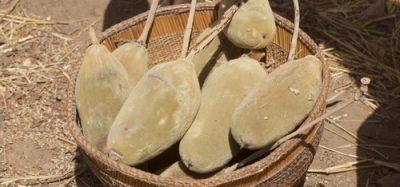The battle for the survival of shrimp
- Like
- Digg
- Del
- Tumblr
- VKontakte
- Buffer
- Love This
- Odnoklassniki
- Meneame
- Blogger
- Amazon
- Yahoo Mail
- Gmail
- AOL
- Newsvine
- HackerNews
- Evernote
- MySpace
- Mail.ru
- Viadeo
- Line
- Comments
- Yummly
- SMS
- Viber
- Telegram
- Subscribe
- Skype
- Facebook Messenger
- Kakao
- LiveJournal
- Yammer
- Edgar
- Fintel
- Mix
- Instapaper
- Copy Link
Posted: 13 September 2023 | Professor Chris Elliott | No comments yet
Professor Chris Elliott reveals an exciting new project designed to future-proof the shrimp farming sector.


Whether we are talking about or eating prawns or shrimps, few of us really know where or how they are produced. Our knowledge is often based around how good they taste, the best way to cook them and how nutritious they are. But during the course of this year myself and a number of collaborators have been conducting a ‘deep dive’ into shrimp and found some very important and, in some cases, very disturbing information.
Aquaculture now accounts for more than half of the fish and seafood we eat and in the case of shrimp, 55 percent of world production is now farmed. Most shrimp aquaculture occurs in China, Thailand, Indonesia, India, Vietnam, Brazil, Ecuador, and Bangladesh. .
This is surprising, as they supply around 20 percent of all global animal protein and have lower environmental impacts than many other food sources. Beyond protein, they are a critical source of micronutrients, especially important to vulnerable populations, and are a cornerstone of global cultures, diets, economies, and livelihoods. The climate and ecological emergencies, disease outbreaks and precarious supply chains now pose hugely significant challenges to the future of this industry.
Some colleagues from Queen’s University, Belfast and I have partnered with some outstanding research institutions in Thailand and Singapore as well as a range of companies in the ASEAN region to undertake a project exploring the barriers and pathways to developing a more resilient global shrimp industry.
Our project focuses on three resilience challenges: climate resilience, disease resilience and supply chain resilience. Through co-creation methodologies we will be exploring and testing emerging technologies, alternative business models and providing economic and policy solutions to address these overlapping challenges in real world contexts.
Despite the extensive challenges faced by the shrimp industry, we have come to realise that many solutions already exist. What is less clear is how this wide mix of solutions might overlap to address the multiple resilience challenges in a way that fosters more benefits than trade-offs. How these solutions might be incentivised and implemented across a huge network of small, resource-constrained farms is our focus. Through a Living Laboratory framework, we will be putting shrimp farmers and processors at the centre of our project. We will collectively design new model farms of the future, with a view to shaping policy and practice relevant to the global shrimp industry and beyond.
Our team is actively enlisting companies, researchers, and non-profit organisations to join and support this project to strengthen our capabilities and reach. We are seeking partners who recognise the importance of shrimp production for global protein and nutrient supply, understand the challenges caused and faced by the industry, and can contribute to the co-development of real, research-driven solutions across different scales and timeframes. We are particularly keen to engage with shrimp producers in the ASEAN region and companies who purchase from these supply chains.
As this project progresses, we will be releasing our findings and more information about the work we are doing, so make sure you stay tuned to New Food to ensure you’re the first to hear about this crucial work!









